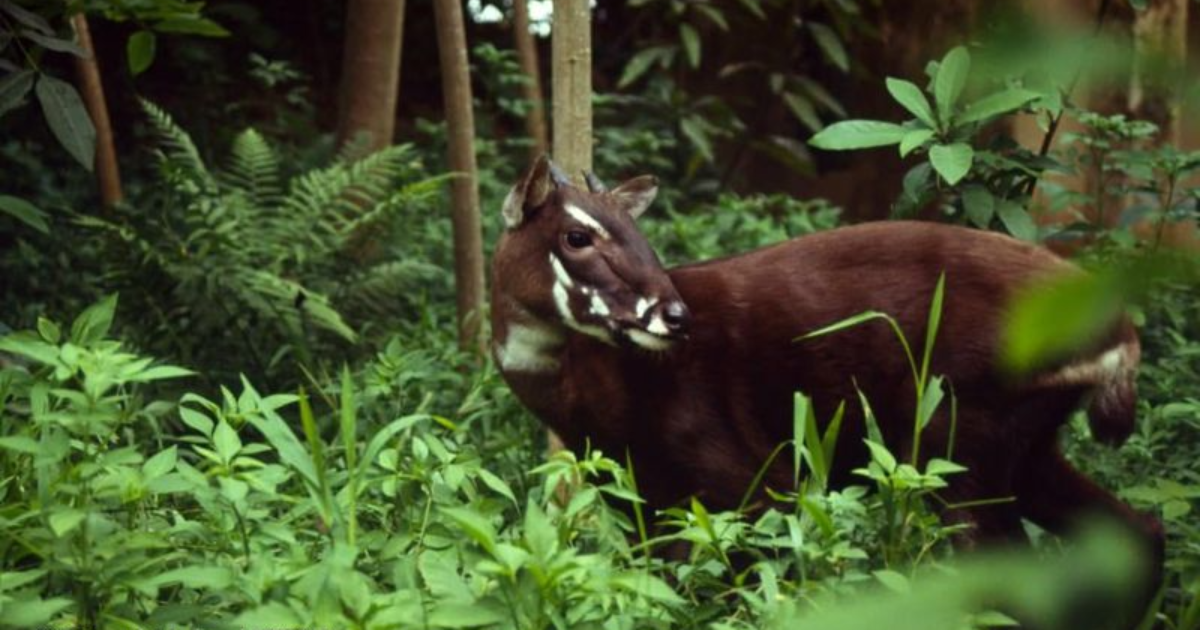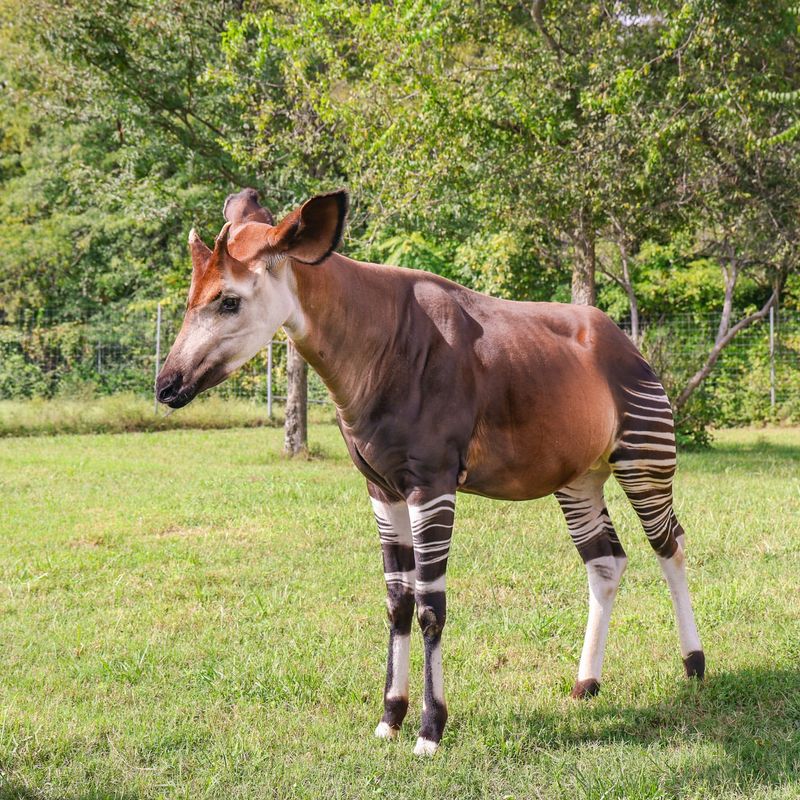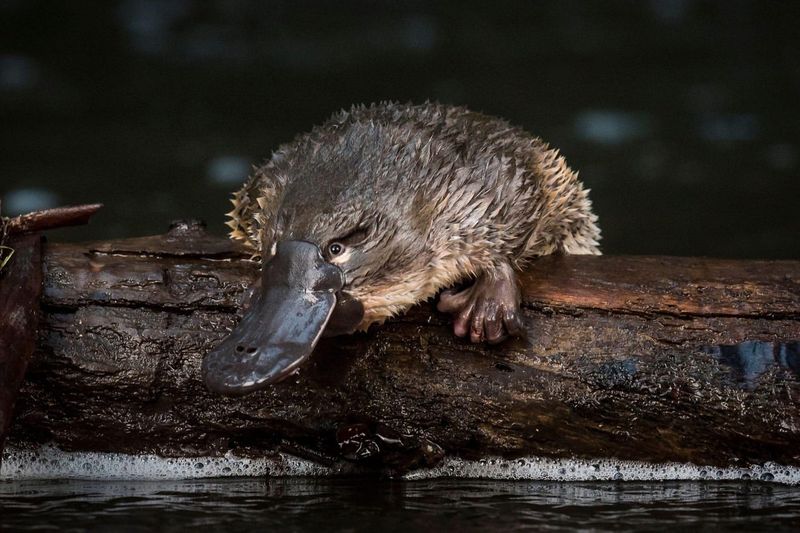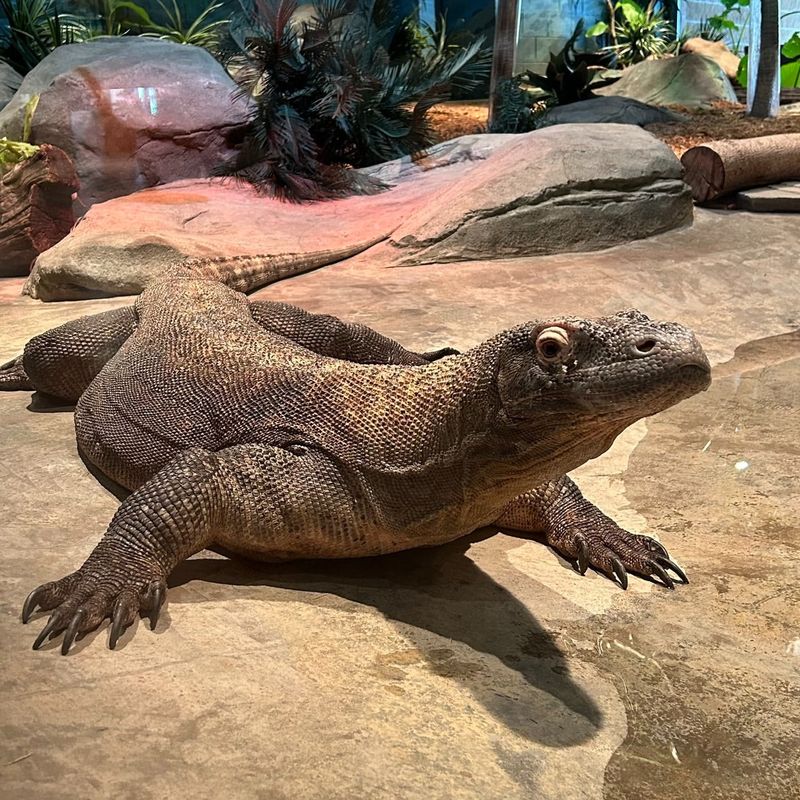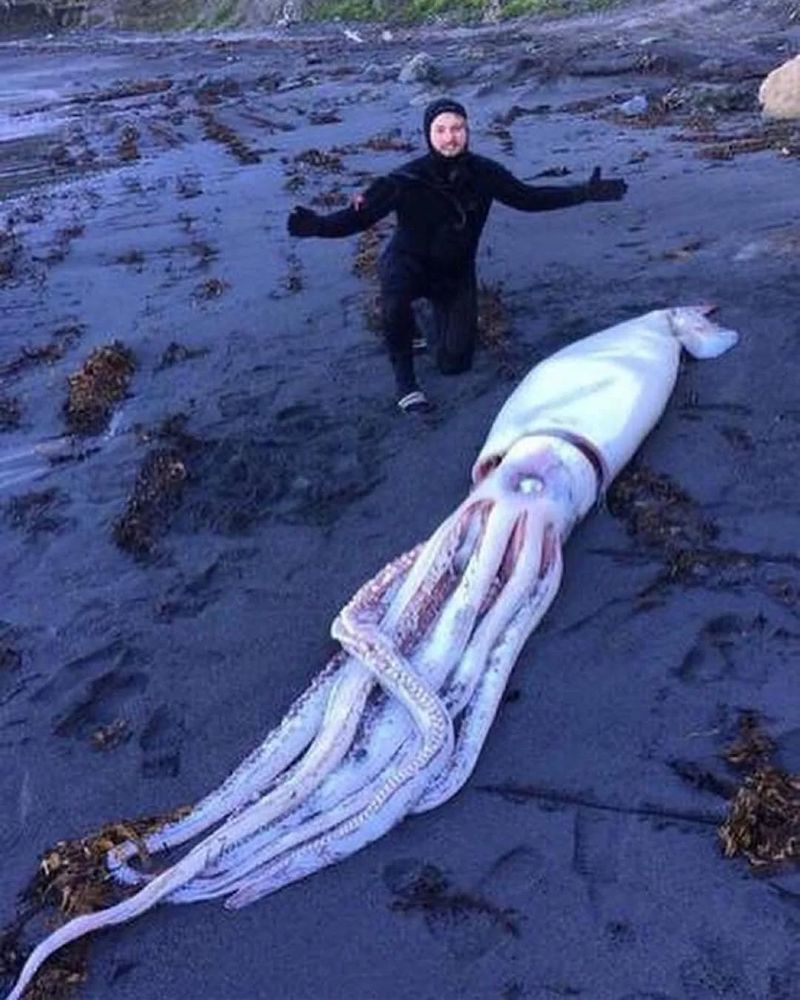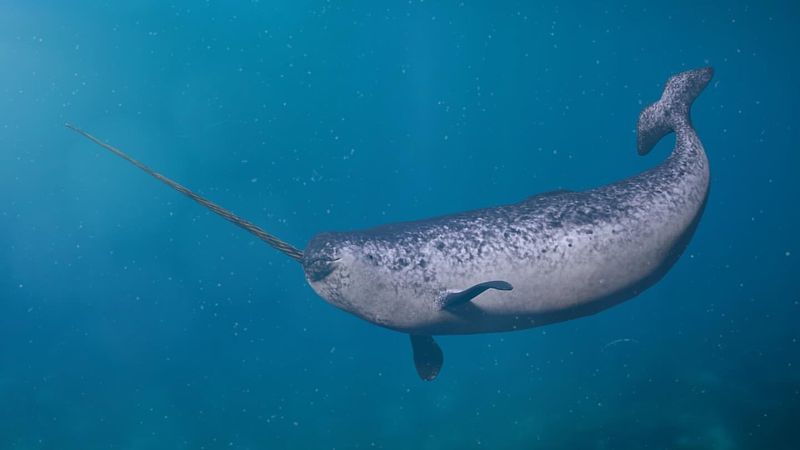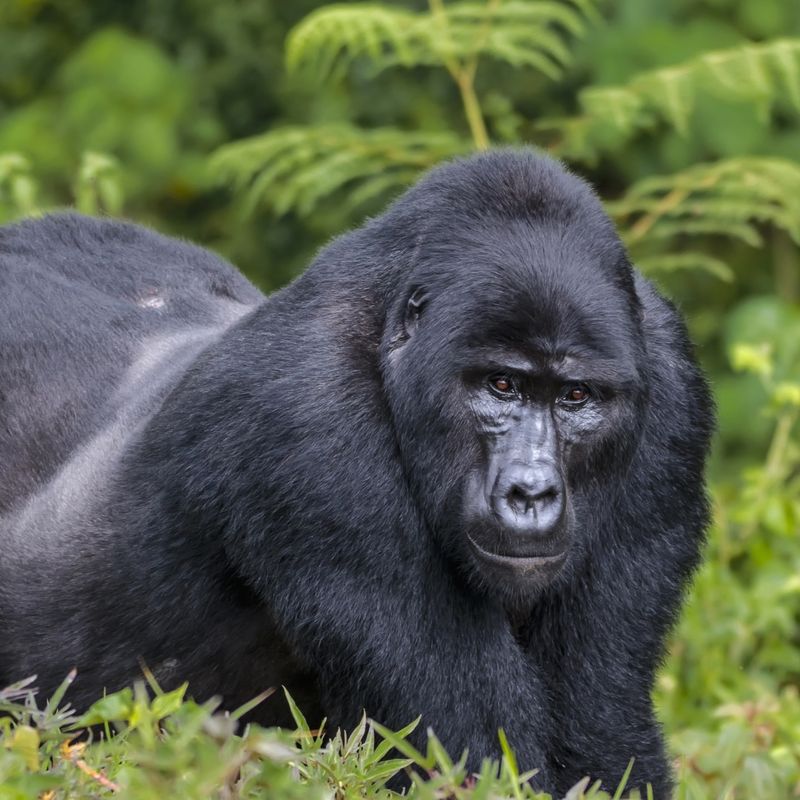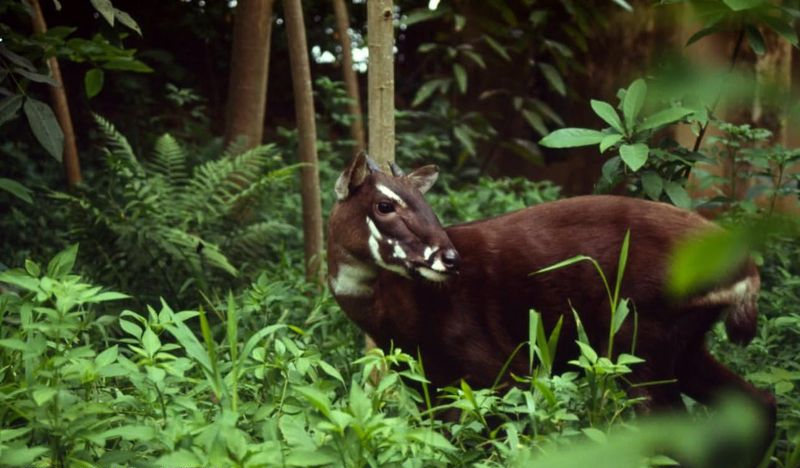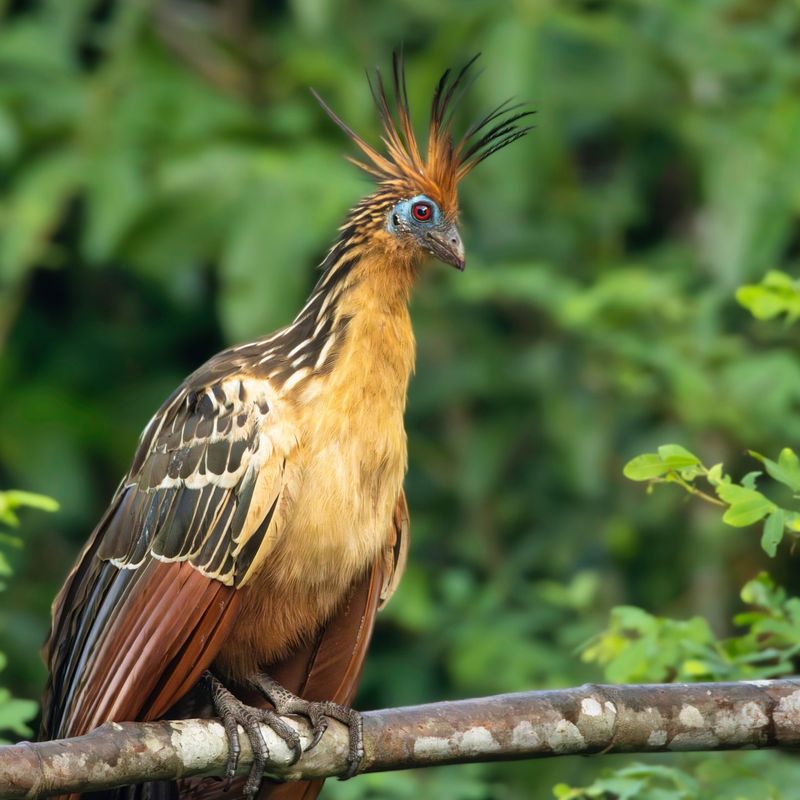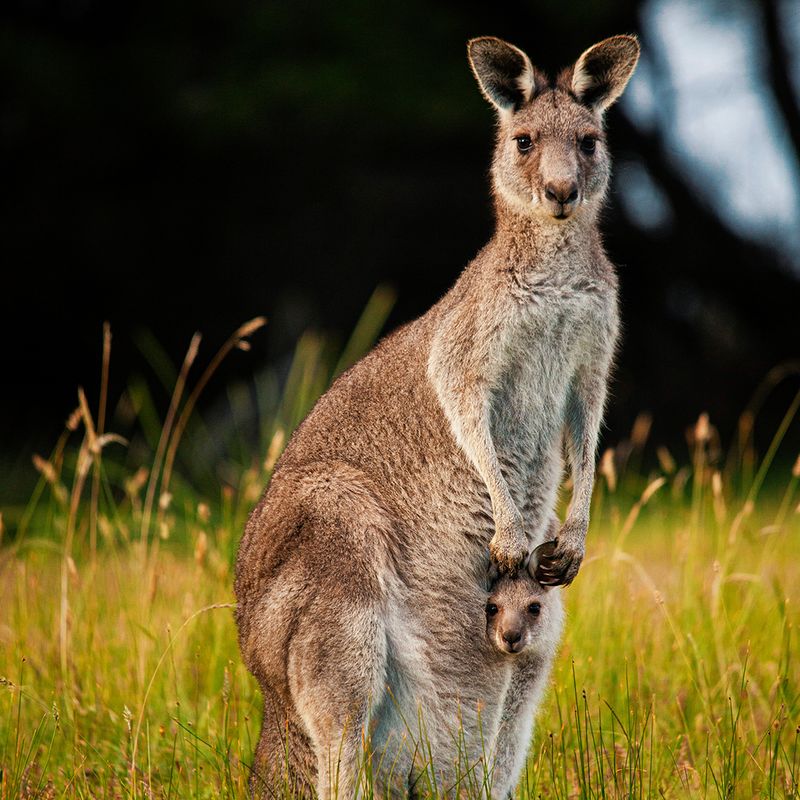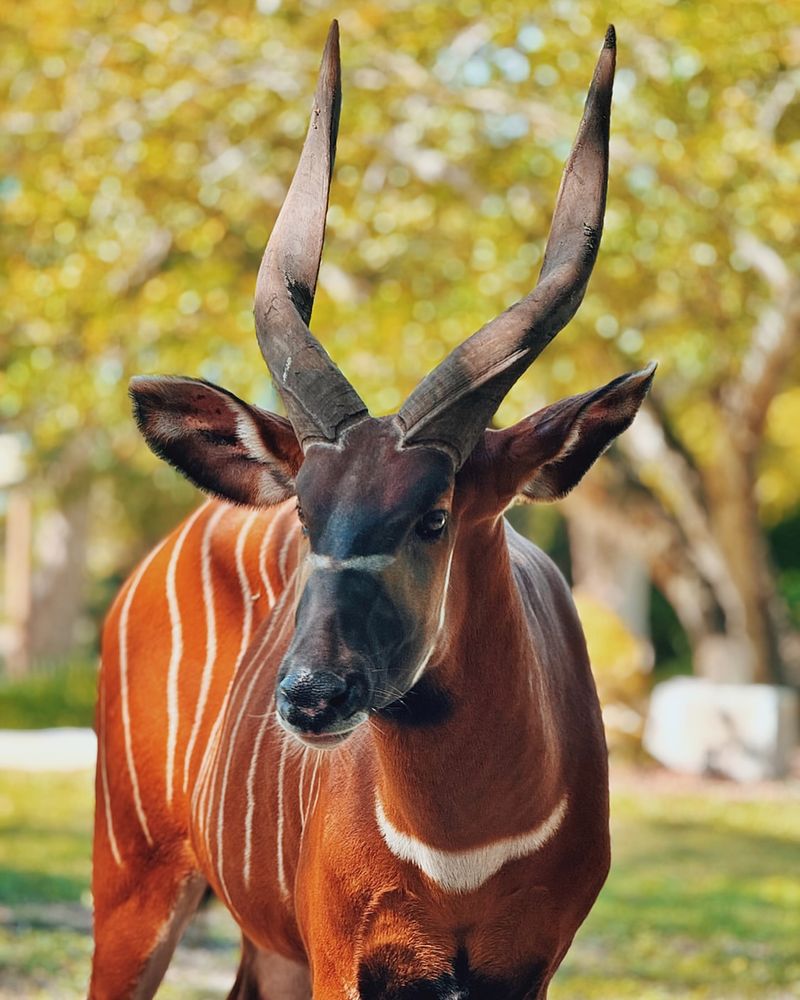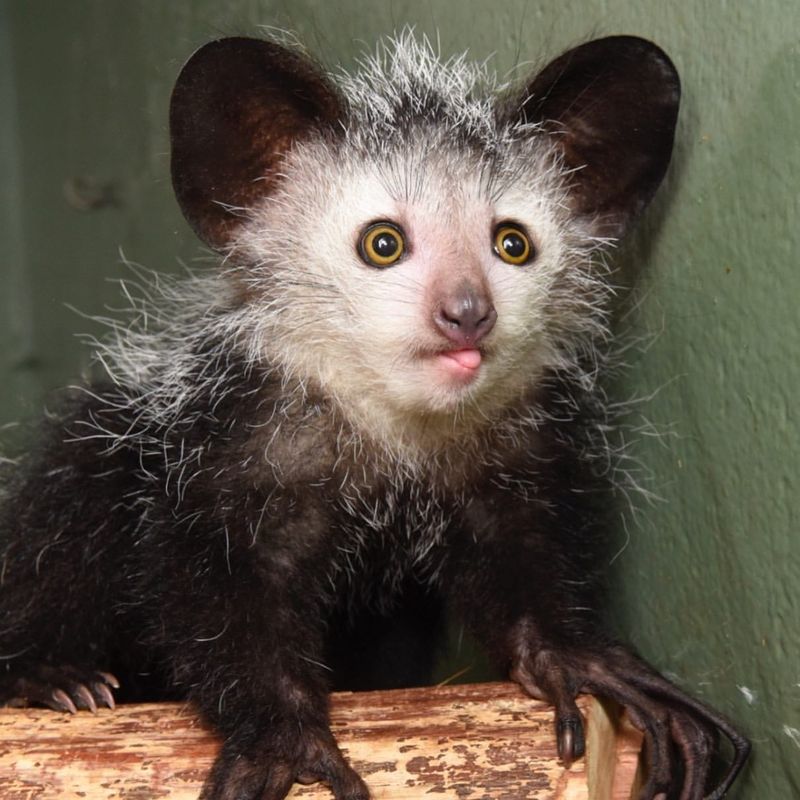📖 Table of Content:
Ever heard of a creature so bizarre you’d swear it was dreamt up by someone who had too much coffee and not enough sleep? You’re not alone.
Throughout history, many animals have been dismissed as nothing more than tall tales, imaginary beasts spun from the minds of sailors, explorers, and overly enthusiastic storytellers. But here’s the twist: some of those “mythical” creatures turned out to be 100% real.
These once-legendary animals prove that nature has a wicked sense of humor. So buckle up, because we’re about to dive into the wild, wonderful world of animals that made the leap from folklore to fact—and trust us, they’re even cooler than the stories made them out to be.
11. Okapi
Often dubbed the “African unicorn,” the okapi has intrigued explorers and locals alike. Its unique appearance—a blend of zebra-like stripes on its legs and a head reminiscent of a giraffe—added to its mythical status.
Originally documented by European explorers in the late 19th century, the okapi was long considered a cryptid. Many dismissed it as a fantastic tale. However, in 1901, Sir Harry Johnston sent okapi skins and skulls to London, proving its existence.
This elusive creature inhabits the dense rainforests of the Democratic Republic of Congo. Despite its discovery, the okapi remains a mysterious and rare sight, often hiding from human eyes.
10. Platypus
When the platypus was first described by European scientists in 1798, they thought it was a hoax. With its duck-bill, beaver tail, and webbed feet, it seemed like a creature stitched together from parts of other animals.
The platypus lays eggs, yet it’s a mammal, adding to the confusion and disbelief. Skepticism reigned until a live specimen was observed.
Native to eastern Australia, the platypus is a solitary and mainly nocturnal creature. It thrives in freshwater habitats, using its bill to sense prey. Unfortunately, climate change and habitat destruction pose significant threats.
9. Komodo Dragon
Stories of giant lizards lurking in the Indonesian islands stirred imaginations for centuries. The Komodo dragon, the world’s largest living lizard, embodies these tales.
With lengths of up to 10 feet, it dominates the ecosystems of Komodo Island and its surroundings. It wasn’t until 1910 that Western scientists officially documented this formidable predator.
Komodo dragons possess a venomous bite, a fact discovered only recently. Despite their fearsome reputation, they play an essential role in maintaining ecological balance.
8. Giant Squid
The giant squid is a deep-sea denizen that inspired countless sea monster tales. Known for its colossal size, it can grow up to 43 feet long. Earlier sailors recounted stories of monstrous tentacles dragging ships into the abyss.
These creatures were once considered mythical until a dead specimen washed ashore in Denmark in 1853.
Living in the ocean’s depths, the giant squid is elusive. Few have seen it alive, contributing to its legendary aura. Its existence underscores the mysteries still lurking beneath ocean waves. Efforts to study and understand this enigmatic creature continue, shedding light on the deep-sea ecosystem.
7. Narwhal
Often referred to as the “unicorn of the sea,” the narwhal boasts a spiral tusk, evoking images of legendary creatures. For centuries, its existence was questioned. Early European explorers brought tales of these tusked whales, but skepticism lingered.
It wasn’t until Arctic expeditions confirmed sightings that belief solidified. Narwhals thrive in the cold Arctic waters, using their tusks for echolocation. This incredible adaptation aids them in finding food beneath the ice.
Climate change poses a significant threat to their habitat, as melting ice disrupts their environment.
6. Gorilla
In the 19th century, tales of giant, human-like apes in Africa circulated among explorers. The gorilla, now a symbol of strength and intelligence, was once considered mythical. Not until 1847 did Western scientists acknowledge its existence, following the discovery of gorilla skulls in West Africa.
Today, gorillas are recognized as gentle giants. They inhabit the forests of Central Africa and play a crucial role in their ecosystems. Observing them in the wild offers a glimpse into the complex social structures of primates.
5. Saola
Dubbed the “Asian unicorn,” the saola is one of the world’s rarest mammals. Discovered only in 1992 in Vietnam’s Annamite mountains, it was a significant zoological find. With its long, straight horns and striking facial markings, it was thought to be mythical.
The saola remains elusive, with few in captivity or detailed studies in the wild. Its habitat in the dense forests faces threats from hunting and deforestation.
Conservationists strive to protect its environment and prevent its extinction.
4. Hoatzin
The hoatzin, known for its unique appearance and odor, is often dubbed the “stinkbird.” Its chicks possess claws on their wings, reminiscent of early bird ancestors, sparking debates about evolution. Found in the Amazon and Orinoco basins, it thrives among swampy forests.
For years, its classification baffled scientists due to its unusual traits. Its distinctive digestive system, fermenting leaves like a cow, adds to its bizarre nature. This adaptation aids survival in dense tropical vegetation.
3. Kangaroo
When European explorers first encountered kangaroos, they believed these hopping animals were mythical. Indigenous Australians have long known and revered them, but their strangeness baffled outsiders.
These marsupials are well-adapted to Australia’s harsh landscapes. They are iconic, yet their habitats face pressures from urban expansion and climate change. Efforts to maintain natural environments support kangaroo populations and the ecosystems they inhabit.
Their story is a testament to nature’s ability to inspire wonder across cultures.
2. Bongo
The bongo, an antelope with vivid white stripes and spiraled horns, was once deemed the stuff of fairytales. Found in Central Africa’s rainforests, its mysterious nature fueled myths. First described by Western scientists in the 19th century, it remains a rare sight to this day.
Bongos navigate dense undergrowth with ease, an adaptation to their forested habitats. However, human activities like deforestation and hunting threaten their survival.
1. Aye-Aye
The aye-aye, a nocturnal lemur native to Madagascar, inspires both fear and awe. Its unusual appearance, with long fingers and large eyes, led locals to view it with superstition. Europeans once dismissed it as mythical until scientific observation proved otherwise.
Aye-ayes play a unique role in their ecosystem, using their fingers to tap on trees and locate insects inside. Their story is a blend of mystery and ecological importance.
